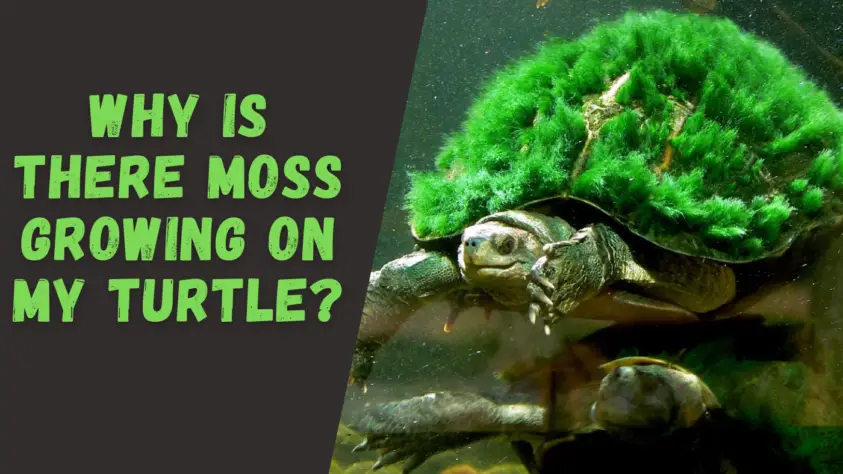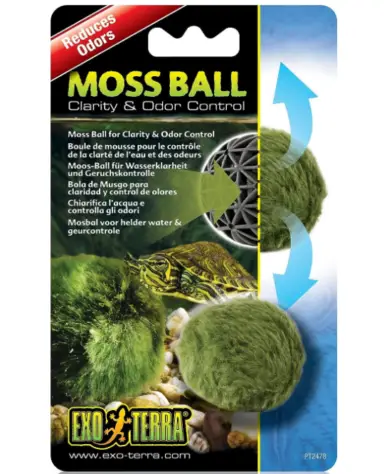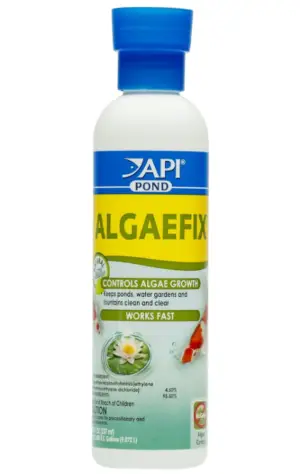You probably started to worry when you notice your turtle has moss growing on their shell. While this certainly gives your turtle a strange look, it doesn’t mean your turtle is in danger. In fact, it can be very normal for a turtle to grow moss on its back. In today’s article, we are going to explain everything you need to know about moss and turtle shells.
Why is there moss growing on my turtle?
The correct term for moss is algae, and it frequently grows on turtle’s shells.
The reason moss is able to grow on a turtle is because their shell provides the perfect place for moss to grow its roots.
Moss typically grows on hard, wet surfaces. In the wild, moss usually grows on rocks and trees. As you are probably aware, a turtle’s shell is both hard and wet, and is similar in structure to a rock. It is also relatively flat and smooth, which are also conditions that moss thrives in. The roots of moss are also able to latch on to the crevices between the scutes on your turtle’s shell.
How to prevent moss from growing on a turtle shell?
If you don’t want your turtle to have moss on its shell, the key is prevention.
The best way to prevent moss from growing on your turtle is to use either a moss ball or use an algae water conditioner. These are both cheap to buy and work like a charm.
You can also help prevent moss growth by performing frequent water changes. This will help maintain a clean water chemistry and will stunt the growth of any moss. If the water changes are not working, you should invest in a filter. If you already have a filter, you may need to get a more powerful one.
It is also important that you do not overfeed your turtle. When food gets left uneaten, it floats to the bottom of the tank. It then decomposes and gets eaten up by bacteria. This bacteria can then accelerate the growth of moss in your turtle tank.
Lastly, your turtle tank might be overrun with moss because it is exposed to too much sunlight. While sunlight is essential for your turtle to bask, it can be overdone. If you suspect sunlight might be the issue, try reducing the amount of sunlight by 25%.
Is moss harmful for a turtle?
Generally speaking, no, moss is not harmful to your turtle. While it can look a little strange aesthetically, moss usually does not cause any sort of damage to a turtle’s shell. That being said, moss might start to attract smaller animals and even parasites that could cause damage to their shell. In extreme cases, moss can accelerate shell rot. However, this is very rare, and 95% of the time the moss will not be harmful to your turtle.
In fact, it is very normal for turtles in the wild to have moss on their back. Some animal behaviorsists even believe this helps a turtle because it helps hide them blend in with their surrounds and hide from predators.
How to remove moss from a turtle’s shell?
If you do not like the way the moss looks on your turtle’s shell, you can certainly remove it without causing any sort of harm to your turtle. The key is to catch the moss early, as it can be harder to remove after it has been growing for a couple weeks.
The easiest way to remove moss from a turtle shell is to use a toothbrush. Gently rub the brush against the turtle’s shell in order to remove the moss. It may take several minutes to completely remove it. If the moss isn’t coming off, you should try dipping the toothbrush in warm water.
Another option is to buy some turtle tank conditioner from amazon. This will help clean your turtle tank and will help remove the moss from their shell.




Pingback:Land Plants Safe for Turtles – The Turtle Expert
Pingback:How to Moisturize a Turtle Shell – The Turtle Expert